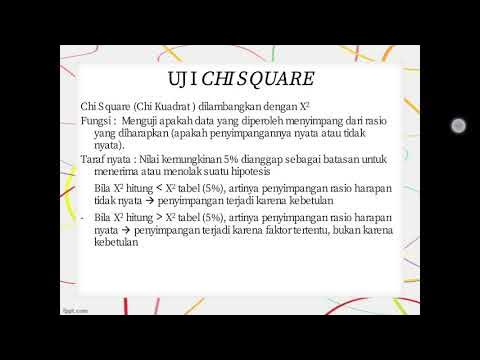Pewarisan Sifat Kelas 9 SMP (Part-2) Persilangan Monohibrid
Summary
TLDRThis educational video script explores the concept of monohybrid crossbreeding in genetics, using the example of red and white roses. It explains Mendel's Law of Segregation and illustrates how to determine the genotypes and phenotypes of offspring through Punnett squares. The script also introduces the idea of intermediate traits, showing how offspring can exhibit blended characteristics, such as pink roses from red and white parents. It encourages practice to master these genetics principles.
Takeaways
- 🌟 Monohybrid cross involves breeding individuals with a single contrasting trait, such as flower color or body posture.
- 📚 The concept is based on Mendel's First Law, known as the Law of Segregation, which states that alleles separate during gamete formation.
- 🌺 An example given is the cross between red and white flowers, where red is dominant over white.
- 🔍 To solve problems, one must understand how to create gametes and how they combine in the F1 generation.
- 📊 The genotypic ratio in the F2 generation is typically 1:2:1, reflecting the Punnett square method used in crosses.
- 🌹 The phenotypic ratio for the flower color example is 3 red (dominant) to 1 white (recessive), or 75% red and 25% white.
- 🎯 Understanding monohybrid crosses helps in predicting the outcomes of genetic traits in offspring.
- 🤔 There are also intermediate traits that result in offspring displaying a blend of parental characteristics, such as a pink color from red and white parent flowers.
- 📝 The process involves creating a diagram to visualize the cross and the potential gametes and their combinations.
- 🧬 For intermediate traits, the F1 generation will show a mix, and the F2 generation will have a 1:2:1 genotypic ratio similar to the monohybrid cross but with different phenotypes.
- 📚 Practice is key to mastering the concept of monohybrid crosses and understanding genetic inheritance patterns.
Q & A
What is the definition of monohybrid cross in genetics?
-Monohybrid cross refers to the breeding of individuals that differ by only one trait, such as color or body posture, and is based on Mendel's first law, the Law of Segregation.
What is Mendel's Law of Segregation?
-Mendel's Law of Segregation states that during gamete formation, the two alleles for a trait separate so that each gamete receives only one allele for each trait.
How is the genotype of the F1 generation determined in a monohybrid cross?
-In a monohybrid cross, the F1 generation's genotype is determined by combining the alleles from the parental generation. For example, if one parent is homozygous dominant (MM) and the other is homozygous recessive (mm), the F1 generation will all be heterozygous (Mm).
What is the phenotypic ratio of the F2 generation when F1 individuals are self-crossed in a monohybrid cross?
-When F1 individuals are self-crossed, the F2 generation typically exhibits a phenotypic ratio of 3:1, with three parts displaying the dominant trait and one part displaying the recessive trait.
What is the difference between a monohybrid cross and a dihybrid cross?
-A monohybrid cross involves crossing individuals that differ by only one trait, while a dihybrid cross involves crossing individuals that differ by two traits simultaneously.
Can you provide an example of a monohybrid cross experiment mentioned in the script?
-An example given in the script is the cross between red and white flowers. The red flower is dominant (M), and the white flower is recessive (m). The F1 generation will all have red flowers (Mm), and when self-crossed, the F2 generation will have a 3:1 ratio of red to white flowers.
What is meant by 'intermediate traits' in the context of monohybrid cross?
-Intermediate traits refer to the blended characteristics of the parents, resulting in offspring that do not exactly resemble either parent. For instance, if one parent has red flowers and the other has white flowers, the offspring might have pink flowers.
How can you predict the genotypic ratio of the F2 generation in a monohybrid cross?
-The genotypic ratio of the F2 generation can be predicted using a Punnett square, which shows all possible combinations of gametes from the F1 generation. The typical genotypic ratio for a monohybrid cross is 1:2:1 (MM:Mm:mm).
What is the significance of the term 'dominant' and 'recessive' in genetics?
-In genetics, 'dominant' refers to the allele that expresses its trait even when present in a single copy, while 'recessive' refers to the allele that only expresses its trait when present in two copies (homozygous recessive).
How does the script explain the concept of gamete formation in relation to monohybrid cross?
-The script explains that gametes are formed by the separation of alleles, with each gamete receiving only one allele for each trait. This is demonstrated through the example of creating gametes from homozygous dominant (MM) and homozygous recessive (mm) parents.
Outlines

Dieser Bereich ist nur für Premium-Benutzer verfügbar. Bitte führen Sie ein Upgrade durch, um auf diesen Abschnitt zuzugreifen.
Upgrade durchführenMindmap

Dieser Bereich ist nur für Premium-Benutzer verfügbar. Bitte führen Sie ein Upgrade durch, um auf diesen Abschnitt zuzugreifen.
Upgrade durchführenKeywords

Dieser Bereich ist nur für Premium-Benutzer verfügbar. Bitte führen Sie ein Upgrade durch, um auf diesen Abschnitt zuzugreifen.
Upgrade durchführenHighlights

Dieser Bereich ist nur für Premium-Benutzer verfügbar. Bitte führen Sie ein Upgrade durch, um auf diesen Abschnitt zuzugreifen.
Upgrade durchführenTranscripts

Dieser Bereich ist nur für Premium-Benutzer verfügbar. Bitte führen Sie ein Upgrade durch, um auf diesen Abschnitt zuzugreifen.
Upgrade durchführenWeitere ähnliche Videos ansehen
5.0 / 5 (0 votes)






